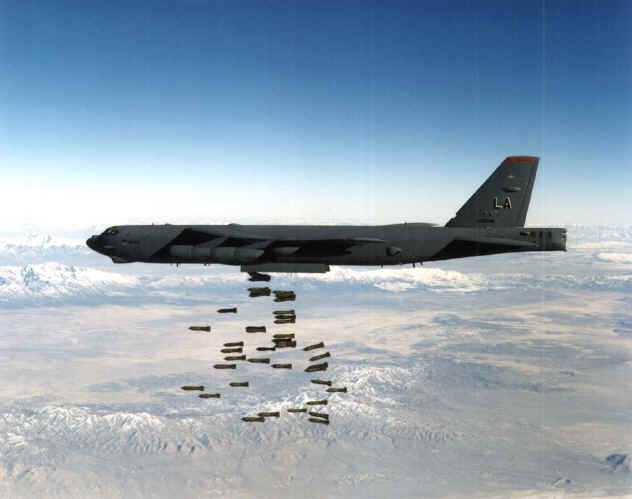Bunker busting is a difficult task for aircraft. Precision-guided munitions can strike a hardened target, but the blast only knocks a hole in the concrete. During DESERT STORM, the Air Force solved this problem by dropping a second precision bomb into the hole to destroy the target inside. This was effective, but costly and dangerous.
The number of million-dollar guided munitions is limited, and using two per target is wasteful.
In addition, the initial blast alerts local anti-aircraft gunners that a target is under
attack, and they focus on the exact area where the second aircraft must fly to drop the follow-on bomb.
Such attacks will become extremely dangerous against future AAA gunners whose night vision goggles allow them to see the "invisible" laser used to designate the target.
The solution is to tie bombs together in a string. A simple nylon rope would allow the precision bomb to pull a follow-on bomb behind it. Tests will be needed to determine the correct length, but 200 meters of rope is a good guess. The attacking aircraft would drop two bombs simultaneously. The lead "smart" bomb would have a 200 meters of coiled rope attached from its rear to the nose of the follow-on "dumb" bomb. This follow-on iron bomb would have retarding fins (which are already used for low-level bombing runs) to slow its fall. As a result, the lead bomb would fall faster until the rope played out and began to drag the dumb bomb along its exact flight path.
The lead precision bomb would strike the target and blast a hole, and the follow-on bomb would hit the same point one second later. This is much cheaper, simpler, faster, and safer than two separate attacks. This would also allow GPS bombs dropped from high-flying aircraft to destroy bunkers by pulling a follow-on bomb behind them. It may become common for a precision bomb to drag several dumb bombs along in a string so they all hit the target.
A B-52 could drop a string of six bombs from 50,000 feet to destroy deep underground bunkers.. They would all be connected by 200 meters of rope, and each bomb in the string would have slightly larger retarding fins. After the lead bomb hits the target, it would be followed by a mile-long string of dumb bombs hitting the exact same spot one second apart. The successive explosions would blast an ever deepening hole into a hardened target. This is not a complex idea, it only requires testing.
Carlton Meyer editorG2mil@Gmail.com